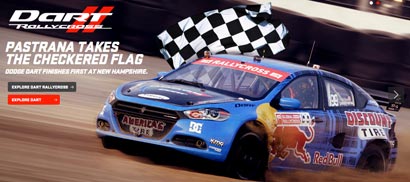
It's likely that a lot more consumers are using tablets to shop for new vehicles. Are automakers ready? The second wave of J.D. Power and Associates' samiannual
study on the effectiveness manufacturer Web sites finds that they are certainly heading that way. J.D. Power finds that 35% of new-car shoppers own tablets versus 21% in January. The Westlake Village,
Calif.-based market research firm also reports that overall satisfaction with automakers' Web sites is up largely because the manufacturers have retooled their consumer Web sites to be more
platform-agnostic and generally easier to use.
The firm's semiannual Manufacturer Website Evaluation Study, which J.D. Power has been conducting for 13 years, uses four
criteria to measure usefulness of automotive manufacturer Web sites to consumers while they are shopping for new vehicles: information/content, navigation, appearance, and speed.
advertisement
advertisement
Dodge takes the top spot in the 2012 Manufacturer Website Evaluation Study, which is based on evaluations from more than 10,000 new-vehicle shoppers who indicate they will be in the market
for a new vehicle within the next 24 months. The Chrysler, LLC division ranks highest in overall satisfaction with a score of 847. The Web site also significantly improved in satisfaction in all
factors from Wave 1. Mercedes-Benz is second, followed by Porsche, Jeep and Lexus and smart in a tie.
Arianne Walker, senior director of media and marketing solutions at J.D. Power,
says that the manufacturers who are marrying tablet and desktop content correctly have done things like applying navigation tools that work for both big-screen traditional computers and tablets."Many
Web sites have introduced content in a layout that places information below the illusory fold, so when loading the Web page, visitors must scroll more to get to that content. While this is acceptable
to tablet users, it can be frustrating for desktop users," she said in a statement. "Many of the highest-ranking Web sites execute this tablet-friendly design with floating menus, providing shoppers
on either a desktop or a tablet with quick and easy access to any content throughout the Web site."
Still and all, consumers are happier about OEM Web sites than they were
even eight months ago. The study posted a 46-point improvement to 818 (on a 1,000-point scale) for all sites since the first part of the study was run early this year.
Other
marketplace changes contributing to increased satisfaction scores include shoppers using newer browser versions and automotive manufacturers that have made technical adjustments to their site, which
improves shoppers' perception of Web site speed.
What's working? Per the study, higher contrast in navigational elements, including clearer buttons; larger text and less clutter,
which increases readability; and easier access to tools important to the shopper.